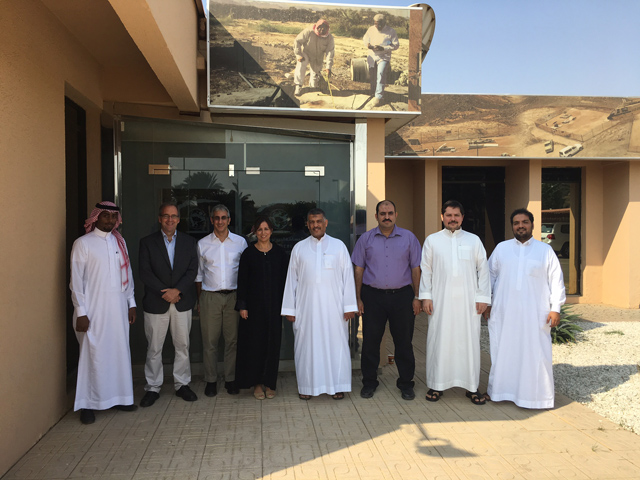15 March 2021–Rengin Gök’s work day starts early, with text messages and email from all around the Middle East, Central Asia, Southeast Asia and the Caucasus regions. Even before the pandemic, she kept odd office hours, responding to her colleagues in these regions late into the night and on weekends.
“I have collaborators, but for me they are like family,” says Gök, who is the program manager for the Seismic Cooperation Program at Lawrence Livermore National Laboratories. “I feel like I have this invisible family that I interact with all day.”
In her position as program manager, Gök helps to develop and improve the capacity in seismic monitoring and understanding Earth structure throughout the regions and to connect experts across the world with seismologists in 15 countries to develop seismic hazard and risk assessment models. The program is funded by grants from the U.S. Department of Energy.
“I’m always interested in solving seismology-related problems, looking at a new seismogram, talking to somebody from a new region and start working with them in establishing research collaboration,” she says. “It’s sort of my passion.”
The goal of the program is to support advanced and high-quality data collection in the regions that improves seismological research globally, upgrades seismic hazard maps and modernizes national building codes, Gök says.
Before the COVID-19 pandemic, Gök was traveling to each of the countries in her program for days or sometimes a week at a time to meet with her family of colleagues. She thought that the travel lockdowns would make her work more difficult, but “things have turned out way better than I thought for this program,” she says. New partners in places like Egypt, which had not been a member of the program, are now reaching out to her at her desk in California.

“People all over are ready to bloom and do really good science,” Gök says, but they are often working in difficult conditions with low pay. “If we want to them to engage with science, we have to offer, as a developed country, as a developed community, things that we can build together.”
She encourages her colleagues to include researchers from these regions in scientific meetings and to write papers with them. Outreach to Ph.D. candidates or other young researchers is especially important, Gök says, to help countries recruit more people to the earth sciences.
“Young girls, especially in places like Oman and Saudi Arabia, approach me and ask me how to engage with the western world and how to study here,” she says, noting that she is hoping to bring one of those young researchers to work at academic institutions in the U.S.
Next year will mark 20 years of service at LLNL for Gök, who first came to the U.S. as a postdoc in 2001, after receiving her Ph.D. at Boğaziçi University in Turkey. She got her start in seismology almost as “an accident,” encouraged by a physical education teacher in high school who was married to a geophysics professor.
Cooking is one way that Gök remembers Turkey, and all the places she misses traveling to these days, as she tries out different recipes from those countries. “Cooking a dish reminds me of my time with those people, and I like to bring that flavor to my life.”
The pandemic also gave Gök time to learn touch typing, and she adopted Beanie, a “pandemic puppy,” who joins her on her early-morning calls.
As a LLNL staff scientist, Gök’s own research interests include developing software called the Coda Calibration Tool that looks at the tail end of seismograms—the coda—to determine moment magnitude for very small earthquakes. Magnitude is her main focus of study, but she also works in seismic tomography, seismic source behavior, and the propagation and attenuation of regional seismic waves.
One piece of advice Gök gives to students: don’t forget to look at seismograms on their own before using advanced tools to analyze them. She recalls her days as a Ph.D. student in Turkey, gathering paper records from seismic stations. “I had allergies, I was sneezing in those dark rooms with the dust, but I was fascinated by looking at them,” she says. “I would think, ‘let me check this earthquake! How does this behave?’”
SSA At Work is a monthly column that follows the careers of SSA members. For the full list of issues, head to our At Work page.
